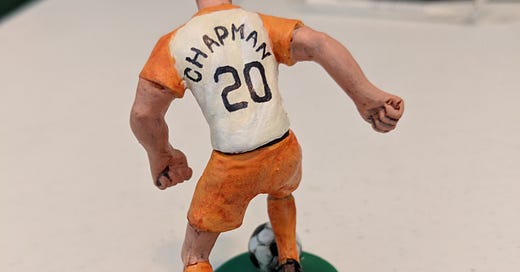Andy Scores! Vol 2 - Part 1/3: Welcome to Wichita
Andy Chapman joins a second British invasion of the heartland.
To read Volume 1, become a subscriber (only $7.99 a month!) by clicking above. Here are the links to Part 1 and Part 2 of Volume 1.
After spending the first part of his American soccer career in sunny southern California, Andy Chapman signed with the Wichita Wings of the Major Indoor Soccer League at the very end of 1979. His first impression of Wichita:…
Keep reading with a 7-day free trial
Subscribe to MISL 1980s: The Story of Indoor Soccer to keep reading this post and get 7 days of free access to the full post archives.



